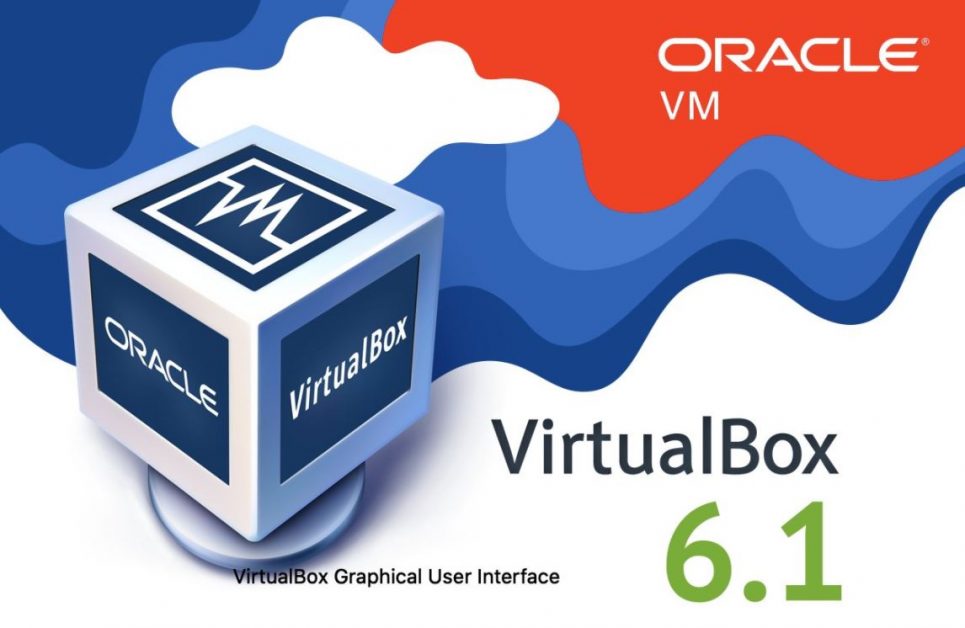Geekflare is supported by our audience. We may earn affiliate commissions from buying links on this site.
Virtual Desktop Infrastructure (VDI) has been witnessing a higher adoption in the last few years due to its excellent capabilities like remote access, convenience, security, and more.
That said, gone are those days when employees had no option but to walk into their office to complete the work. Organizations had to spend a fortune on desktops and hardware to enable remote access.

Eventually, it led to issues concerning computing scalability, networking capabilities, storage, etc. To this, VDI solutions emerged as a savior against these problems.
But how?
Let’s understand all about VDI technology, its capabilities, and the best VDI solutions for your business.
What Is VDI?
Virtual Desktop Infrastructure (VDI) is the infrastructure technology that runs virtual desktops on different devices and operating systems. VDI facilitates this by using virtual machines living on a data center’s centralized host server.
This virtualization platform replaces physical desktop computers and comes packaged as software apps, operating systems, and hardware resources. This infrastructure allows users to work the same way they used to do on laptops or physical desktops.
Different components of VDI are:
- A client to access the virtual machines (VMs)
- A Virtualization server
- VMs to host virtual desktops
- A connection broker
VDI finds application across industries, including healthcare, law, finance, military, telecommunications, educational institutions, call centers, design and engineering firms, and others.
VDI vs. Desktop Virtualization & VDI vs. VMs
One of the people’s biggest confusions with virtual desktop technology is that they think VDI and desktop virtualization are the same.
Although the difference may not be clear from their names, the technology scale behind them is the actual difference.
Desktop virtualization is an umbrella term for a technology that separates a desktop environment and its hardware to run a virtual machine (VM) on a desktop. It can be implemented differently, for example, as a Remote Desktop Service (RDS) to allow users to connect to shared desktops running on remote servers.
However, Virtual desktop infrastructure (VDI) refers to a kind of desktop virtualization. This data center technology provides hosted desktops to remote users.
Now, this may also spark confusion between a VDI and VM. Virtual machines (VMs) are the technology consisting of software machines that power VDI. These machines are created by dividing a physical server to form virtual servers using a hypervisor or server virtualization. VMs are used for various applications, such as running virtual desktops in VDI environments.
How Does VDI Work?
In Virtual Desktop Infrastructure (VDI), a Virtual Machine Monitor (VMM) or hypervisor is the software that partitions servers into various VMs and runs them. These machines, in turn, host several virtual desktops that users can access from their computers remotely from anywhere.
Furthermore, users connect their desktops to these VMs via a connection broker – a software gateway between the server and users. This software decides who can connect to which VM in a data center.
Implementing VDI includes two main steps:
- All virtual desktops are hosted in a centralized server in a data center. And each VM is allocated some hardware resources in connection to the server and has an operating system image.
- To continue accessing a virtual desktop, a strong network connection between the user and server is necessary. In the backend, the hypervisor manages and creates VMs to cover each VDI environment. The connection broker allocates suitable virtual desktops from the centralized pool to the clients.
Types of VDI
Based on how users connect to virtual desktops, VDI is of two types:
Persistent: In persistent VDI, users connect to the same virtual desktop and can personalize it based on their needs each time. Also, even if you rest the connection, all your changes will be saved, giving almost the same experience as using a physical desktop.
Non-persistent: In this, a user connects to different desktops with no changes saved since there’s no customization needed. Hence, it’s comparatively cheaper and more straightforward. These VDIs are used in enterprises with a larger workforce.
Benefits of VDI
The benefits of VDI include:
Cost-efficiency: As all the processing takes place on the server, you require lesser hardware for devices, hence, lower investment.
Smoother remote access: VDI enables users to use virtual desktops irrespective of their location or device. As a result, they can access their apps and files easily and work efficiently.
Enhanced user experience and productivity: No matter what device you use – PC, smartphones, or tablet – VDI solutions offer a consistent, fast, and effortless user experience. Hence, employees’ productivity increases.
Improved security: VDI software, when implemented correctly, can enhance security by including firewalls, malware apps, vulnerability management software, and more.
So, do you want to avail all these benefits?
Check out these 5 VDI solutions.
V2 Cloud
Empower your workforce with an enterprise-grade virtual desktop solution by V2 Cloud. They have already served 25,000 users worldwide in the last five years and offer robust capabilities to support businesses with distributed architecture and globally recognized data centers.
Getting started with V2 Cloud is effortless; you can deploy the web-based virtual Windows desktops within minutes for your clients and employees. Using this tool requires no technical expertise or long-term contracts.
V2 Cloud’s fully-managed desktop-as-a-service (DaaS) is handy for IT managers and business owners to streamline their work and save time so they can focus on more critical tasks. This solution is also incredibly fast, scalable, and cost-efficient for businesses of various scales.
Furthermore, V2 Cloud is an excellent choice for business owners that allow work from home to their employees. It will enable smooth workflow on employee devices while ensuring security. This is a helpful tool for managed service providers to add high-margin, cost-efficient virtual desktops to their cloud-based service portfolio.
In addition, software vendors can use it to enable their on-premise app’s cloud version without much expenditure or technical complexity. V2 Cloud is a fully integrated solution that offers secure remote access, antivirus protection, 24/7 monitoring, and daily backups.
However, if you face any difficulty, you can always contact their technical support team 7 days a week via phone, email, and chat. V2 Cloud’s pricing starts from US$40/month for one license and one user.
Citrix
Excellent for small to medium-sized businesses, Citrix is a good option for virtual desktops and apps. Let your employees enjoy a seamless experience using a single console, even if they work with different operating systems.

You can deploy Citrix quickly and enable remote work to keep the workflow steady and productive even during disruptions. It supports high-definition desktops and apps that perform optimally across devices.
You get unified, intuitive, and secure virtual desktops to organize, automate, and guide your virtual workflow and collaborate with team members easily to make informed decisions on time. Features like advanced analytics offer easy troubleshooting.
Citrix makes your cloud transition smoother at a suitable speed. Their DaaS solution provides agility and an adaptive workspace to let the users stay productive all the time, no matter where they are. In addition, it takes care of security for your remote workforce with centralized management and data encryption.
They offer various pricing options that you can choose based on your needs. The pricing starts from US$8 for a term plan and a pay-as-you-go model at US$16/month.
VMware Horizon
Experience digital workspace with the secure and efficient virtual apps and desktops by VMware Horizon in the cloud or on-premises. This platform integrates deeply with VMware’s technology ecosystem to offer faster, cloud-ready, and optimal management.
In addition, you get end-to-end security to keep threats at bay no matter what device your employees use. Using SaaS services and a cloud-based console, you can deploy, monitor, manage, and scale apps and desktops across private, multi-cloud, or hybrid environments.
VMware Horizon transforms the traditional infrastructure with modern technologies to automate and simplify the management and deployment of apps and desktops and offer more personalization. You have various deployment options, including Azure, AWS, Dell EMC, and Cloud VMware Engine.
For security, they use the Zero-Trust model and Carbon Black integration. You can try it free for 60 days and then choose an appropriate pricing model.
Amazon WorkSpaces
Great for businesses of all sizes, Amazon WorkSpaces offers secure, scalable, and reliable virtual desktops. This fully-managed VDI is for Windows and Linux systems that you can use to access loads of resources from a supported device.

Amazon Workspaces makes it easy to assign desktops, secure data in the cloud, and facilitate a remote workforce. The high-performing desktops are great for engineers and developers to access and store proprietary models, code, and designs. You get features such as multi-device support, collaboration tools, DaaS, two-factor authentication, and third-party integration.
They have different pricing plans, including hourly and monthly billing and a combination of the two. You can switch plans any time and start with a free trial of two standard plans with 50 GB user volume and 80 GB root. However, you’re limited to 40 hours of usage per month.
VirtualBox
VirtualBox is an open-source and free hosted hypervisor by Oracle for x86 virtualization. This feature-rich product works on Windows, Linux, macOS, OpenSolaris, and Solaris. It lets you create and manage virtual desktops easily and use Guest Additions drivers to improve performance, which is useful for work involving lots of graphics.

Furthermore, you can configure VMs effortlessly, run them across various platforms, and enjoy features like snapshots, shared clipboards/folders, and seamless mode to run multiple types of apps. In addition, leverage command-line interaction, nested paging, public API to control VMs, teleportation, and more.
Conclusion 👨💻
VDI solutions empower organizations of all sizes to enable a robust remote workforce, scale computing easily, save resources, and avail of many benefits. Choose the best VDI solution for your business based on your requirements, business scale, and budget.



